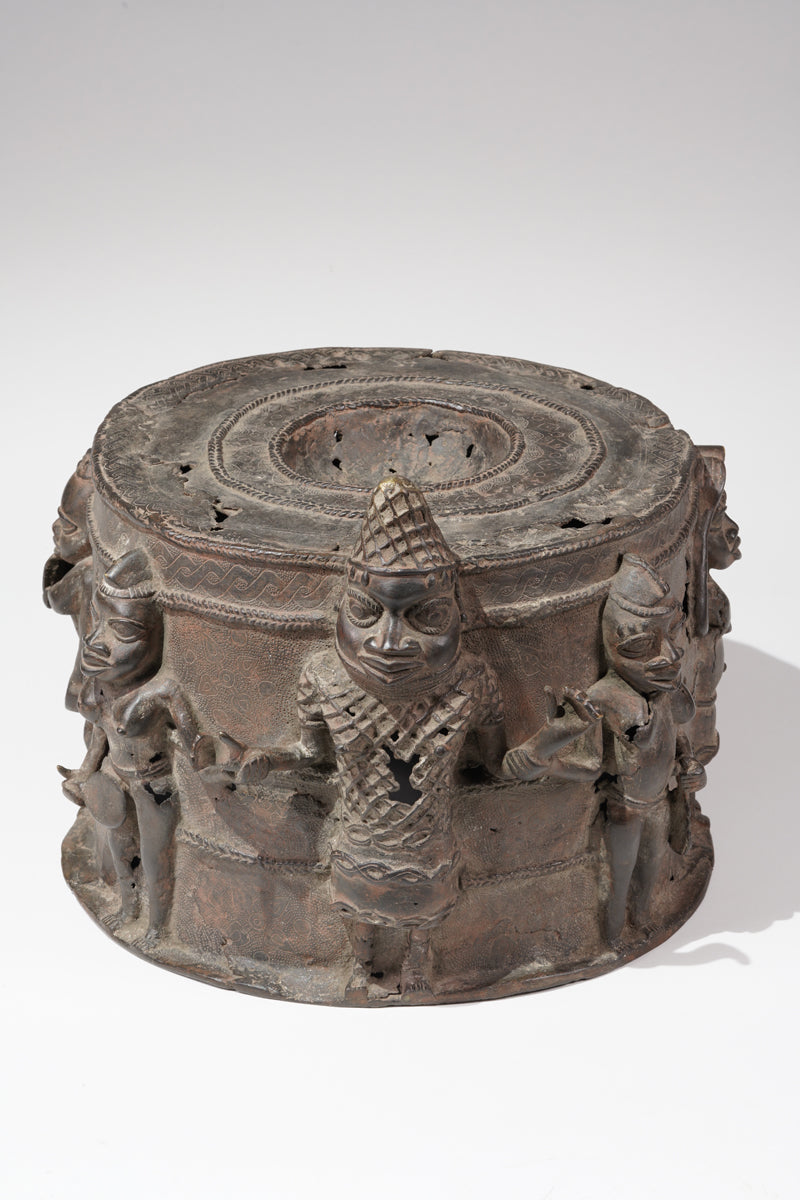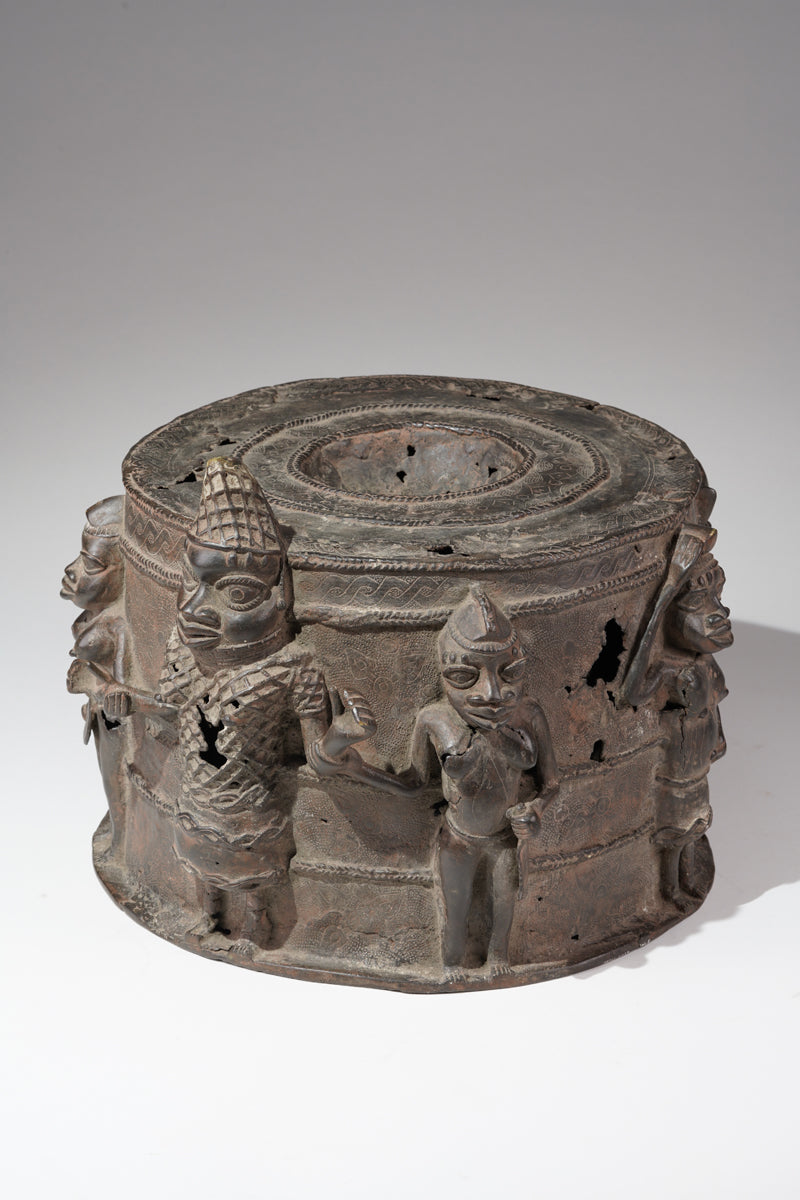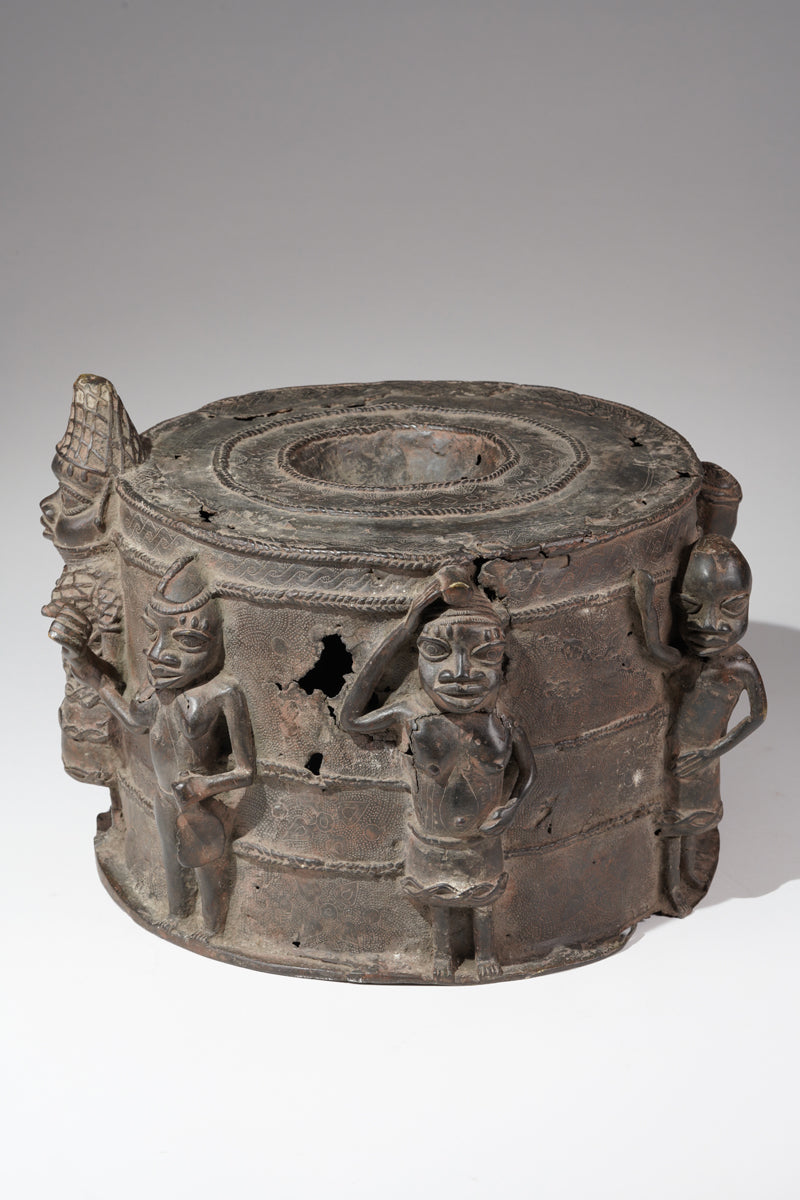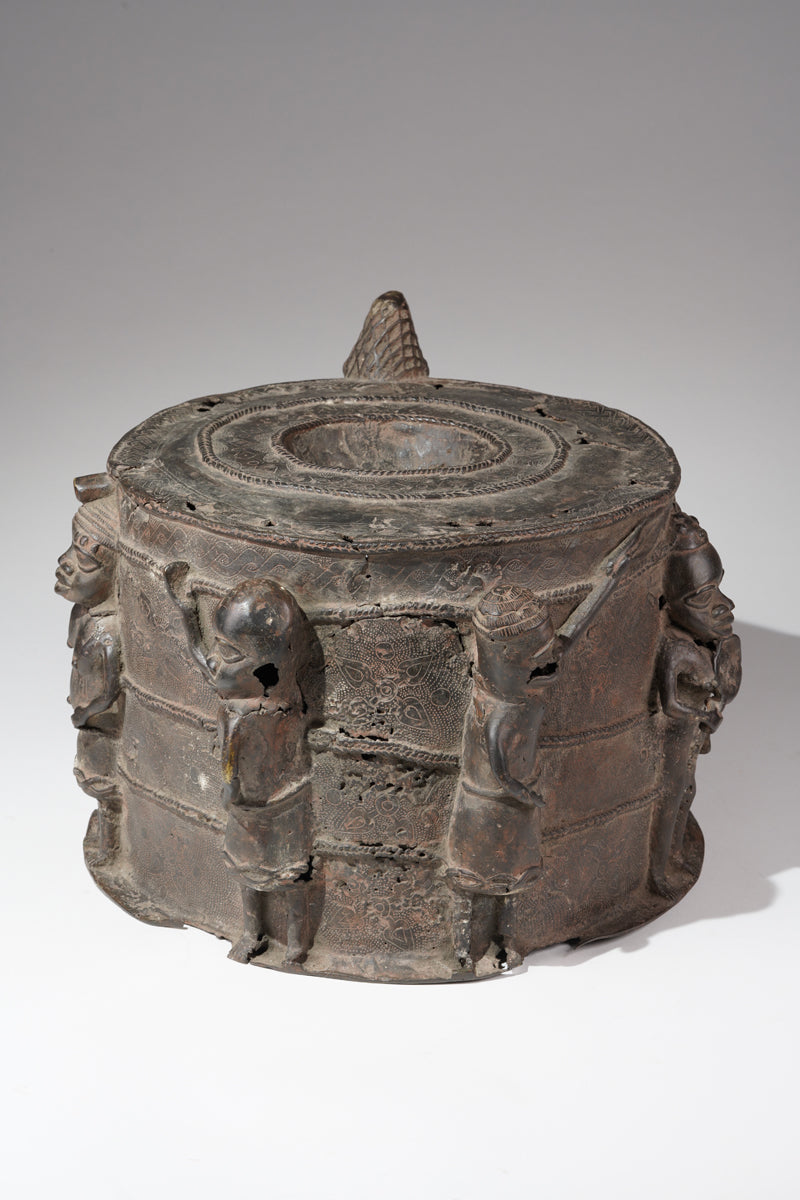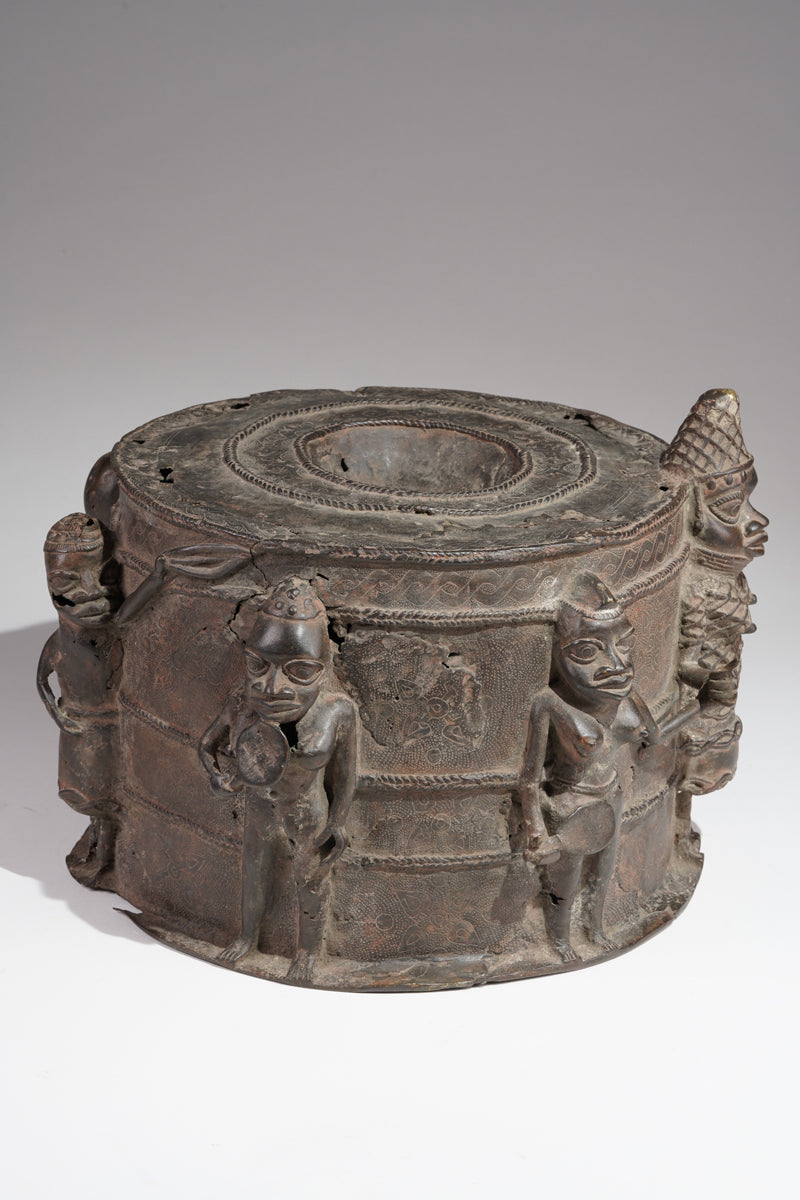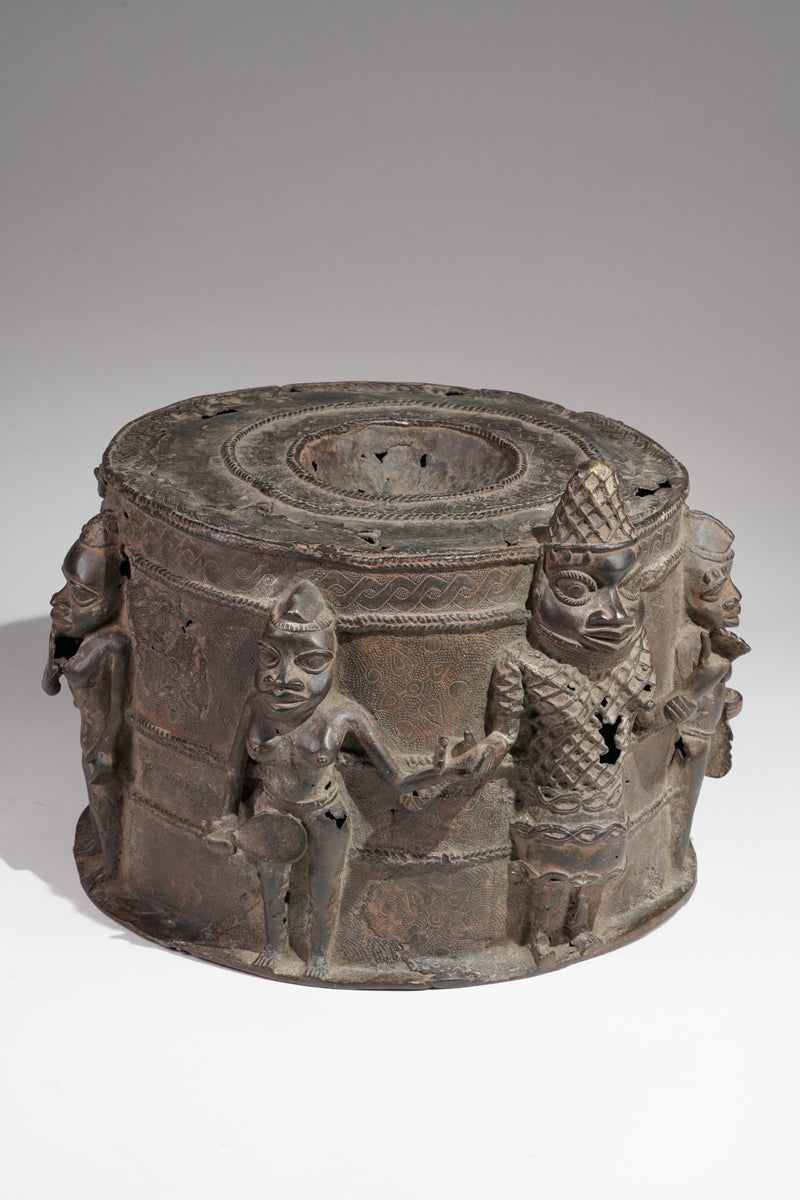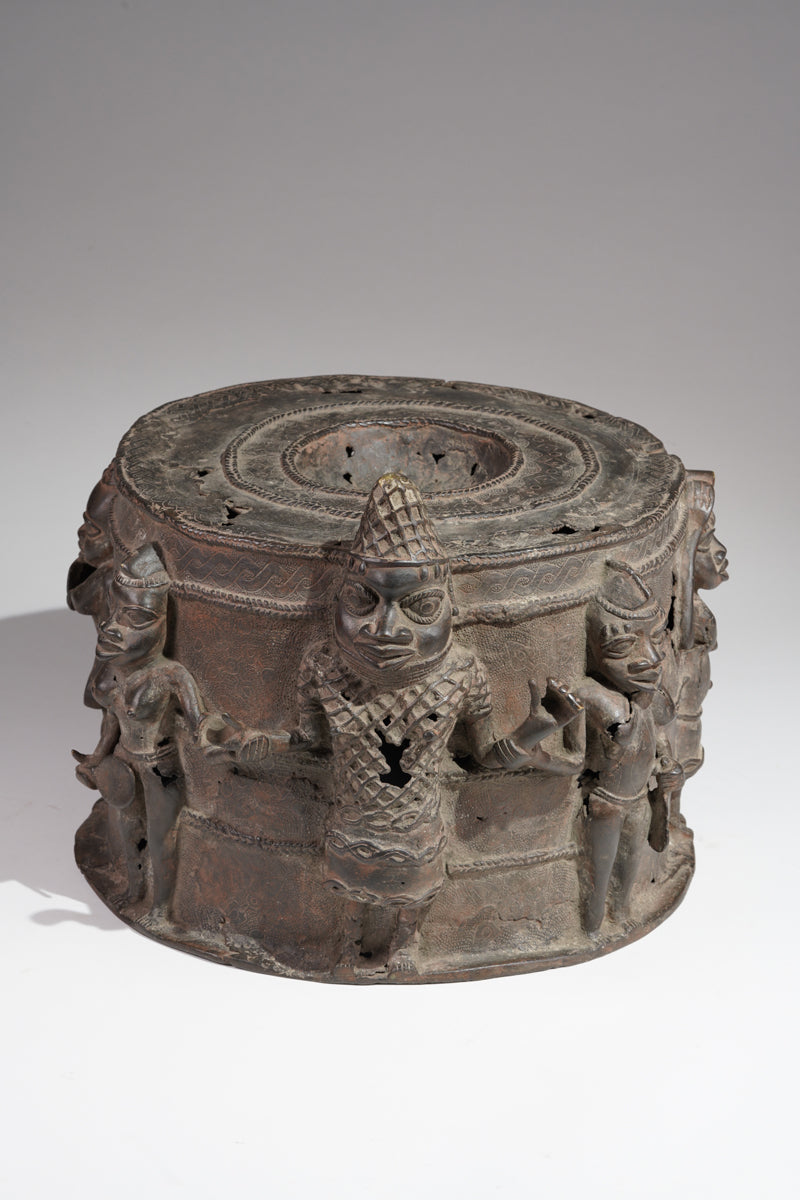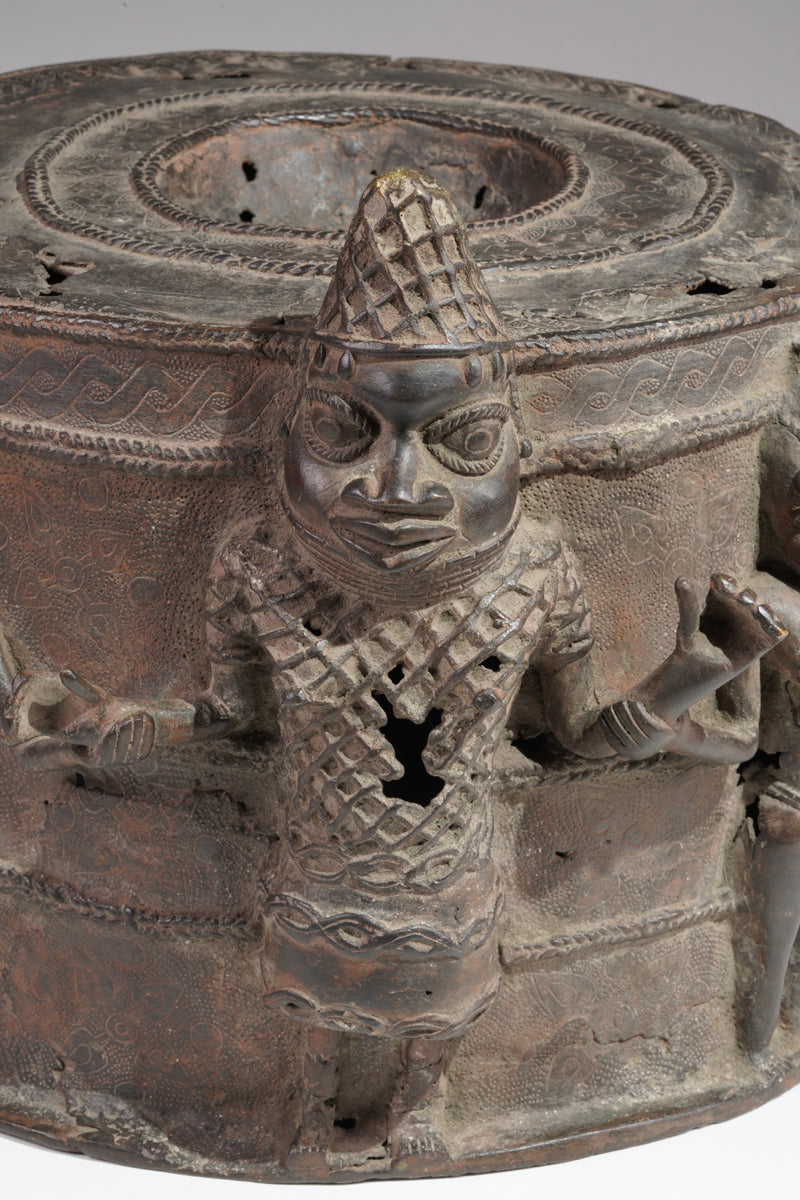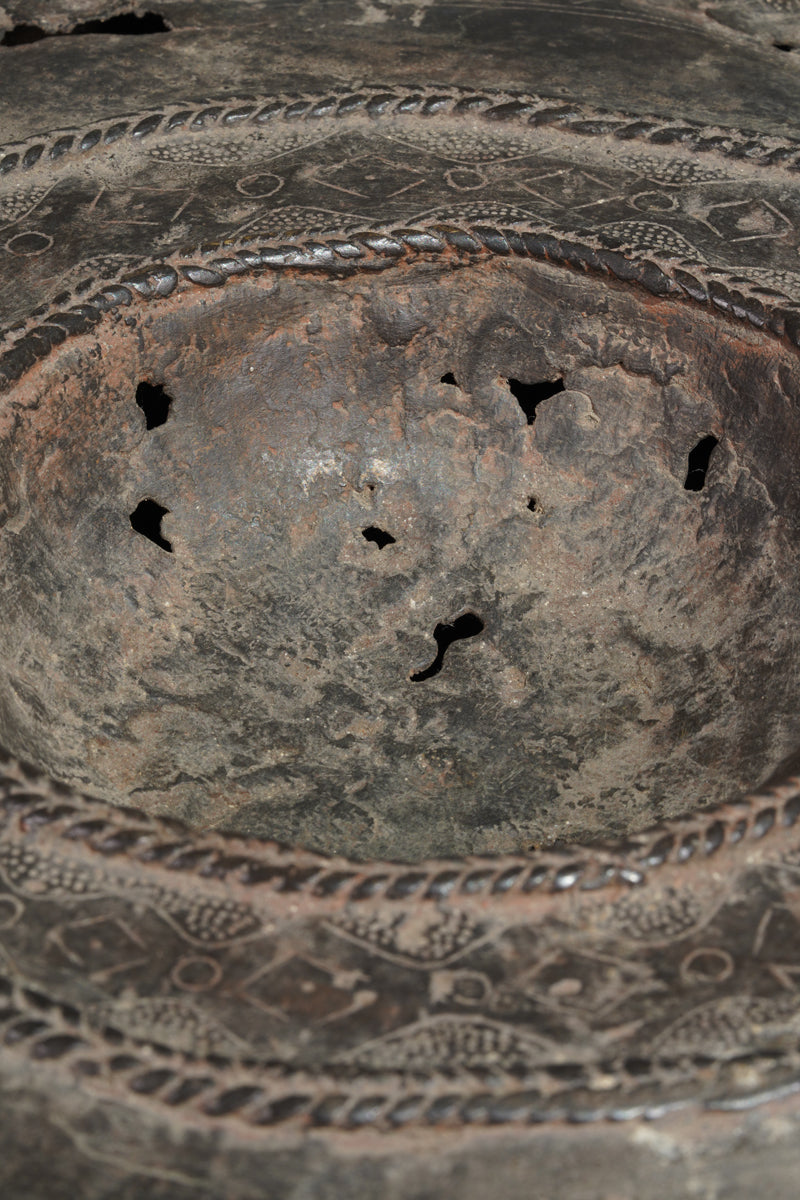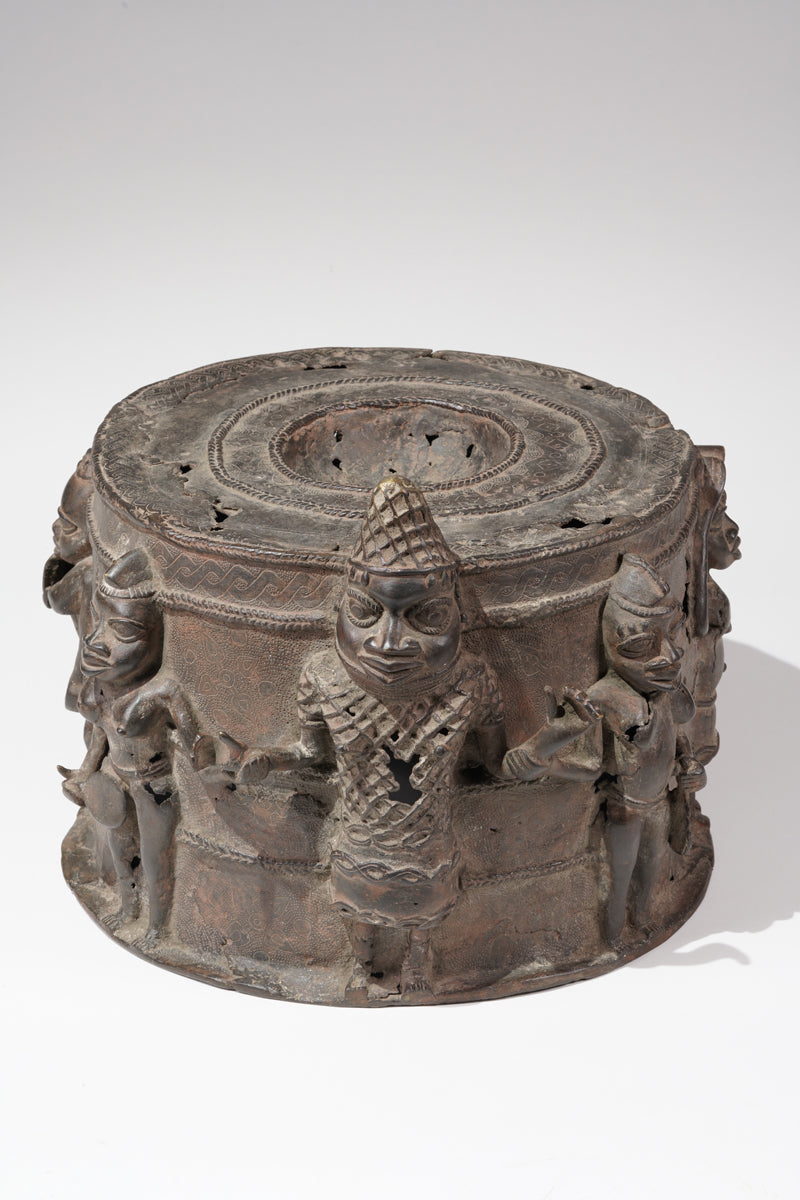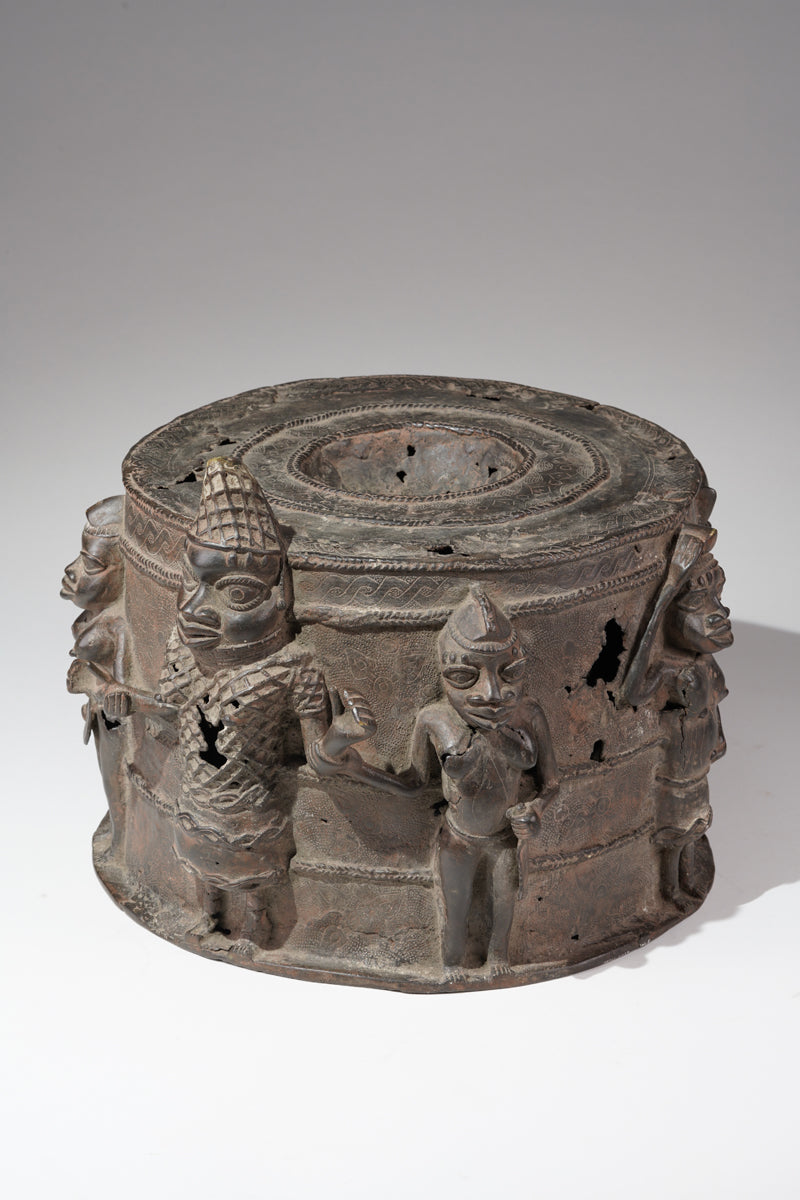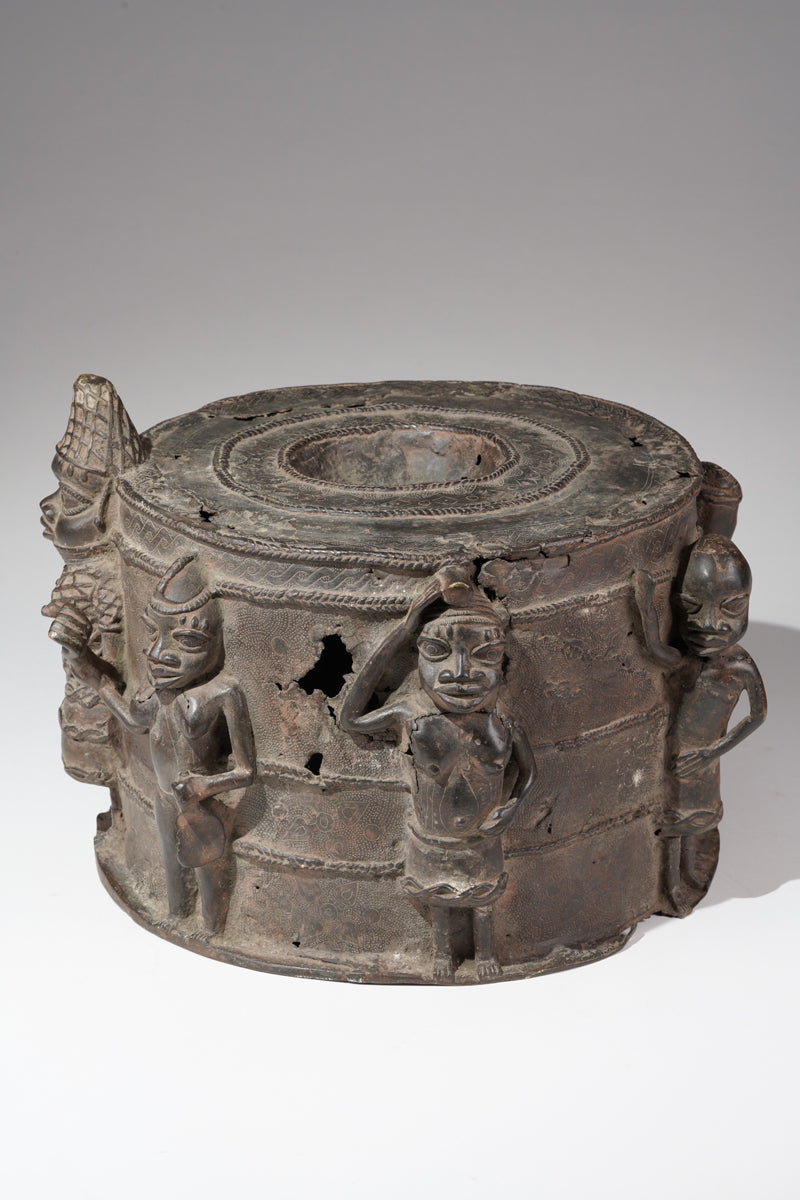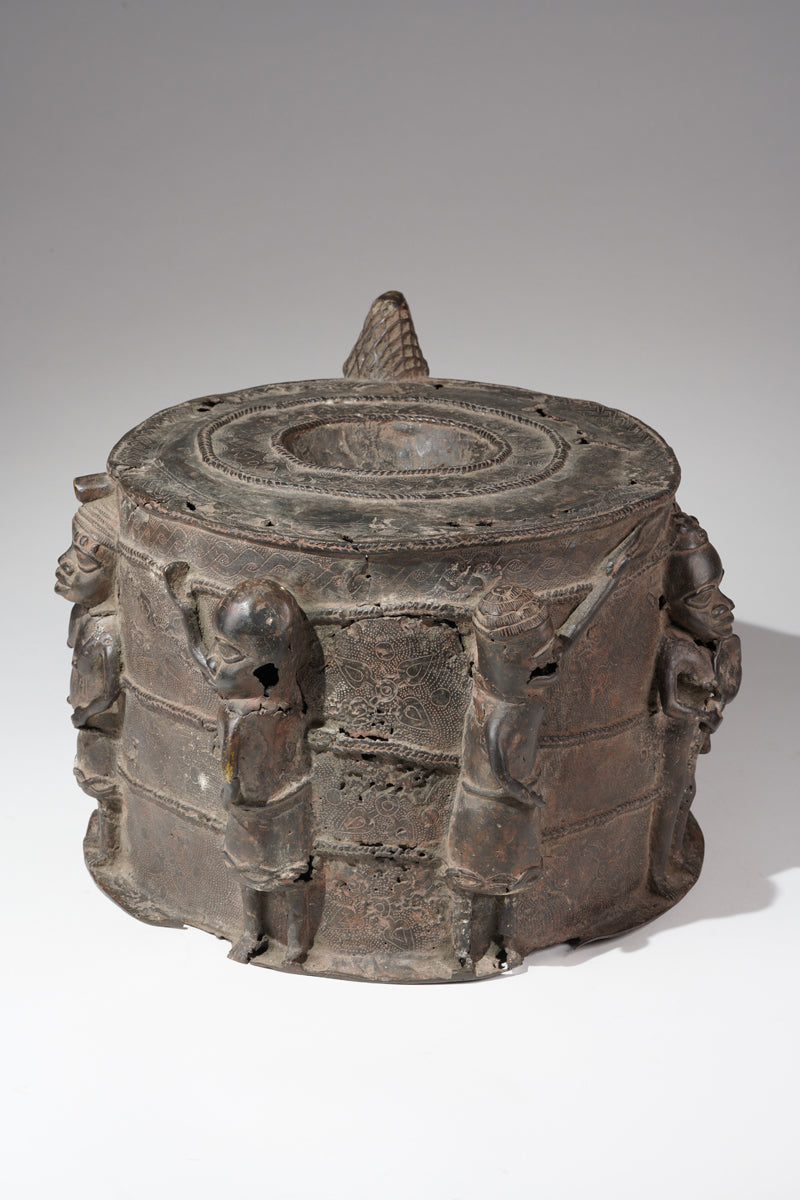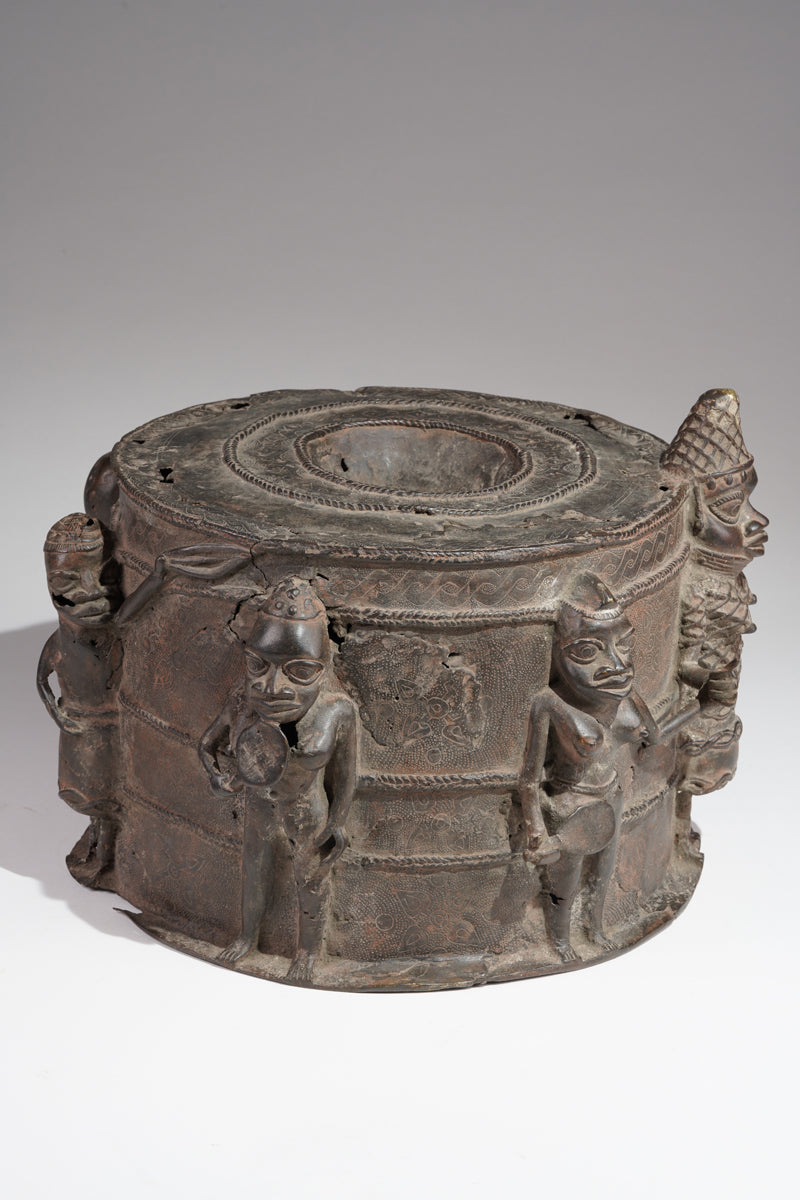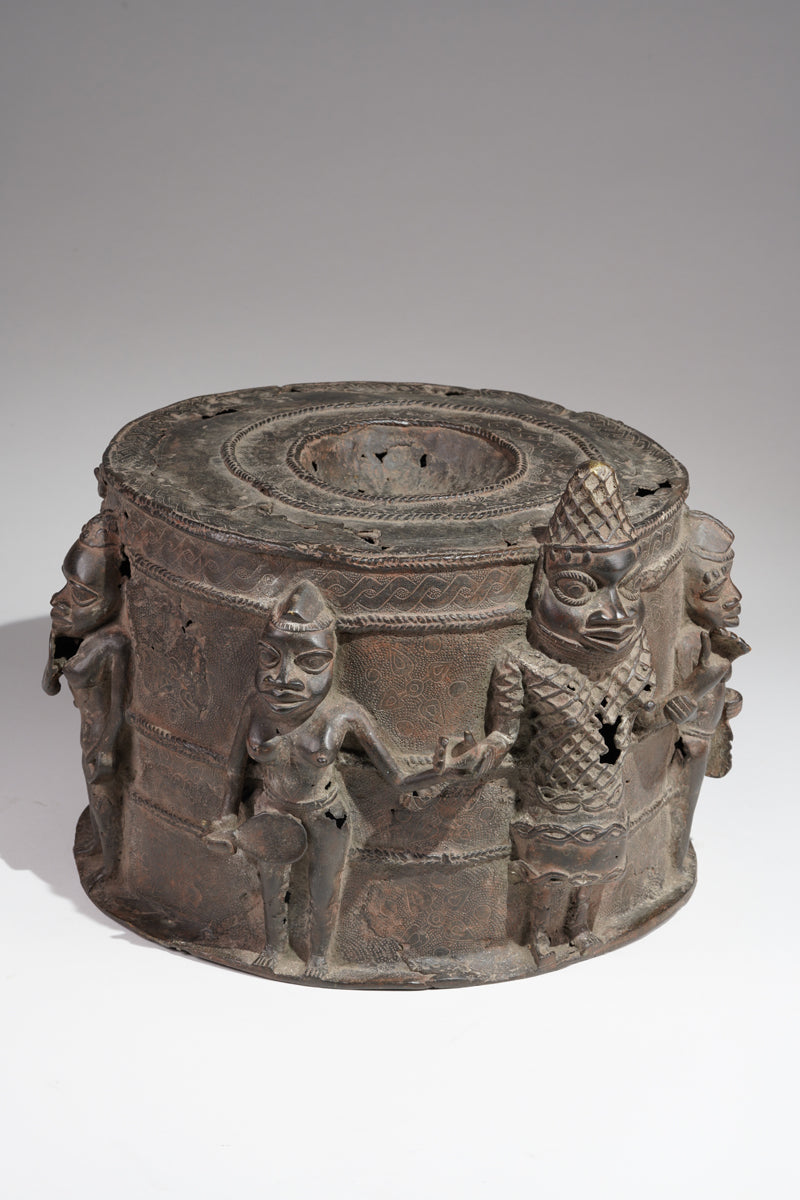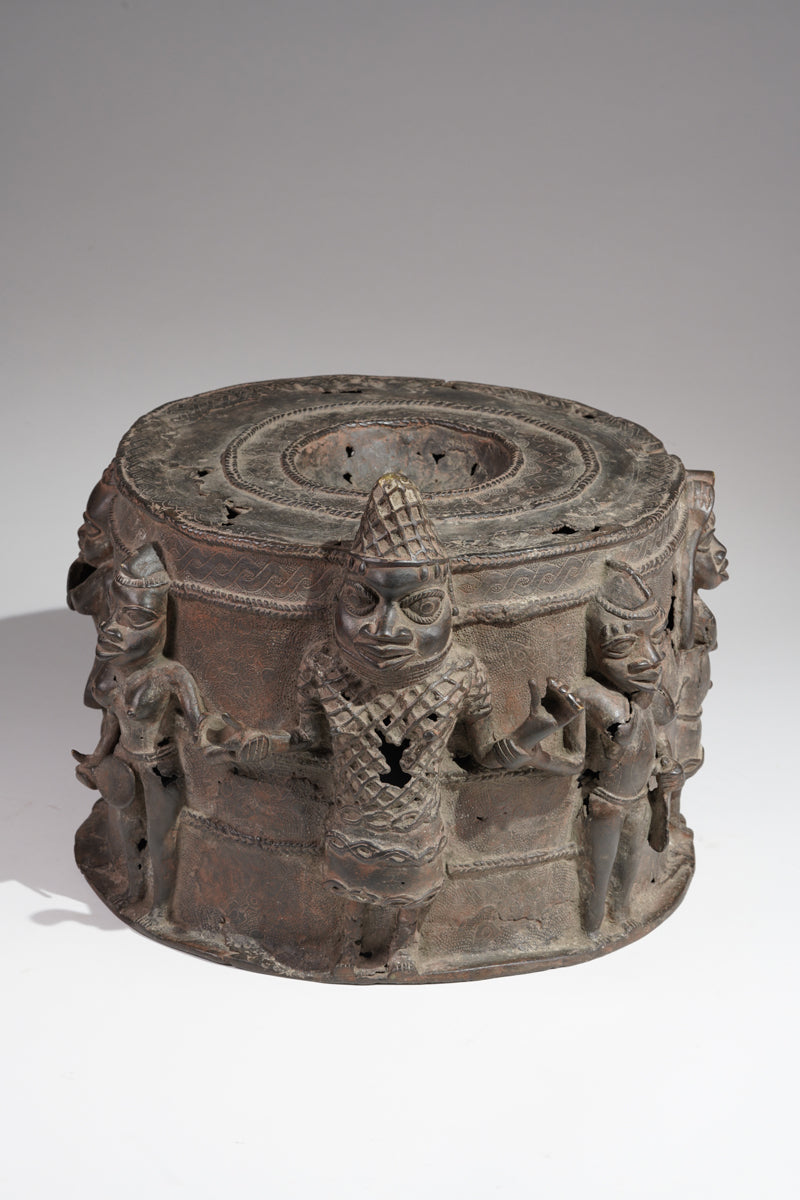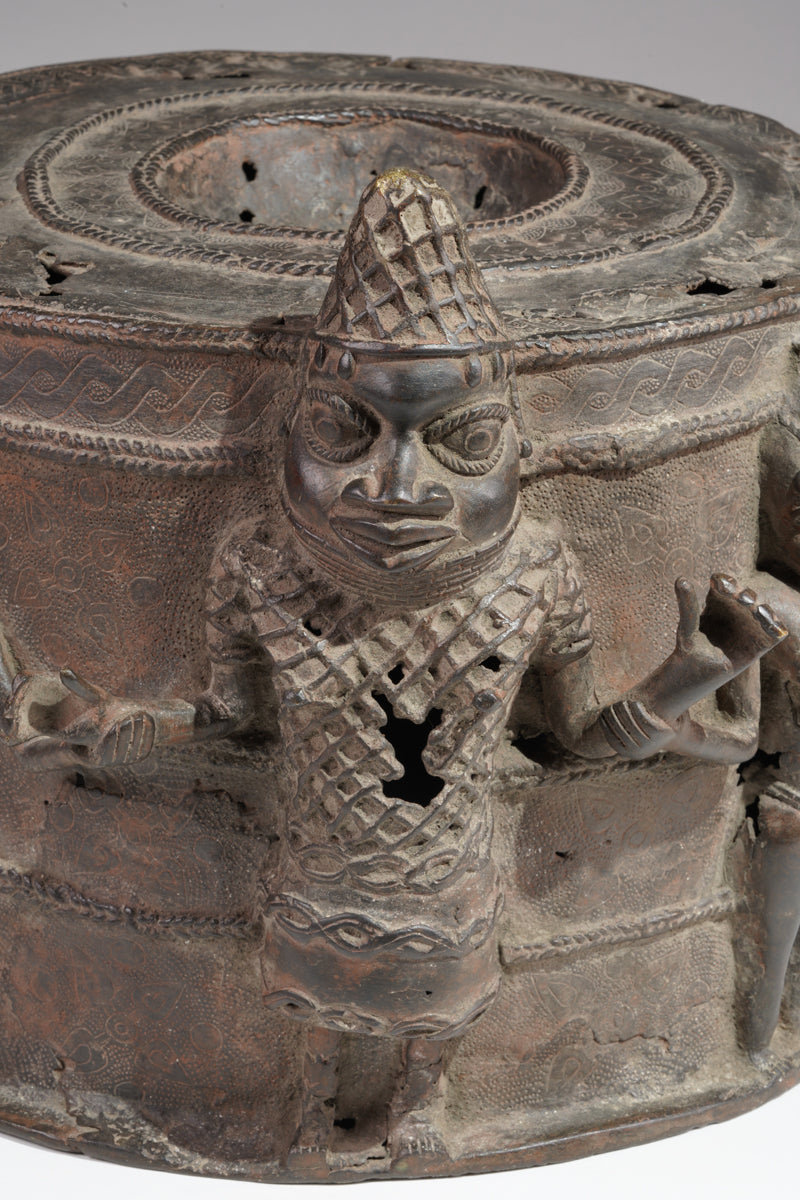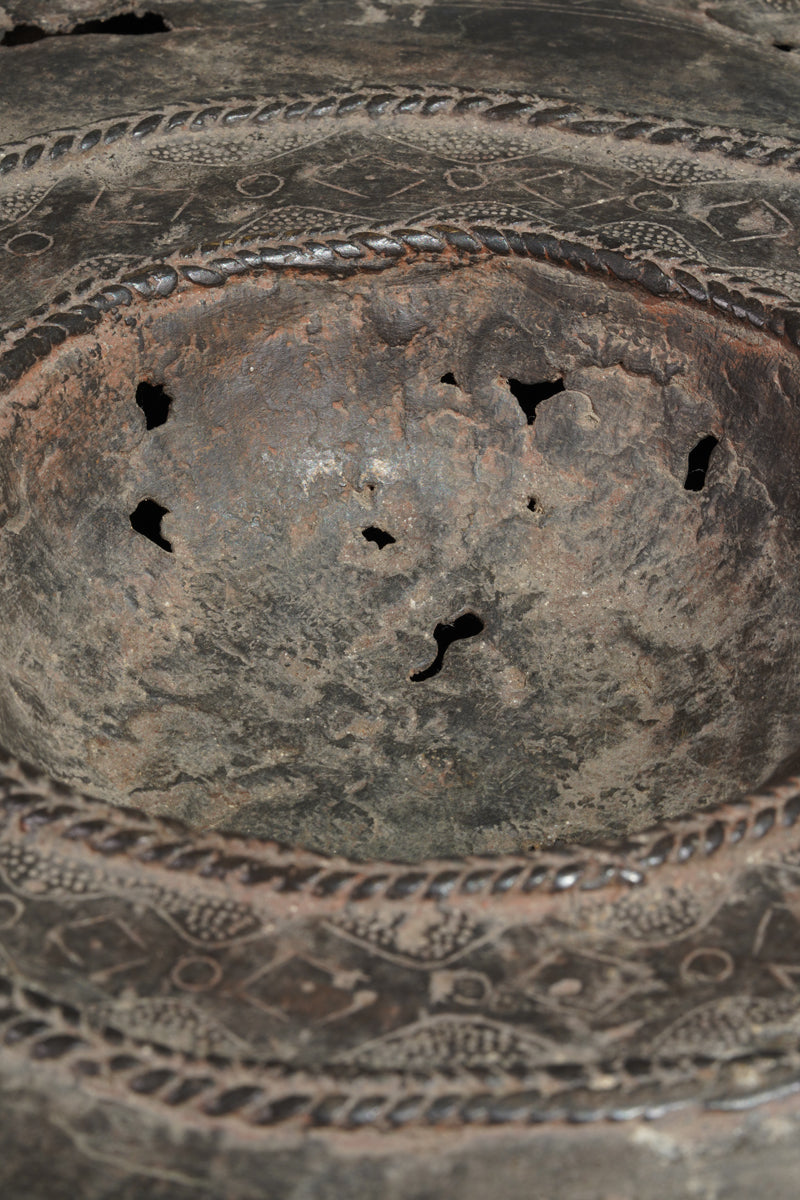wolfgang-jaenicke
An Ikegobo Altar
An Ikegobo Altar
Couldn't load pickup availability
An Ikegobo Altar of cylindrical shape, the outer sides decorated with reliefs of the Oba and his servants.
A Obọ, the hand or arm, is recognised to be the seat of power of accomplishing things. Its worship is specific to warriors as well as wealthy and high-ranking people. It is worshipped to ensure success for special undertakings and give thanks. The Ọba and some people of high rank still have special altars of the hand, called Ikẹgobọ, which take the form of sculptured cylindrical objects in wood, or occasionally bronze, depending on the status of the sponsor.
Ikẹgobọ are placed on ancestral altars. Typically, the Ọba, Iy’Ọba and certain privileged chiefs may use cast forms, whereas chiefs use wooden ones. Altars of the hand are cylindrical, the outer sides decorated with relief carving. They are sometimes topped with sculptural elements, elephant tusks or antelope horns, and wooden altars are topped with a conical projection which mimics a tusk. Worship of the hand is important in Edo belief; the hand relates to an individual’s success with different skills, qualities or characteristics, such as craftsmanship, hunting or warcraft.
Chief Jacob Egharevba worship of the ‘god of the hand’ emerged during the fifteenth century, during the reign of Ọba Ewaure I. What is less certain is whether altars of the hand also emerged at this time, or were a later development. Today, Ikẹgobọ continue to be used on altars by individuals who have high-ranking positions within the palace societies. Source: Digital Benin
The top in the center of the drum-shaped altar features a dish-like depression, the function of which was explained to me by the previous owner. According to him, this hollow was intended to receive the severed head of a rebellious vassal or another defeated enemy, to be presented as an offering to the Oba.
The ethnologist Brigitta Hauser-Schäublin once wrote in the Frankfurter Allgemeine Zeitung, Frankfurter Allgemeine Zeitung, 12 May 2023, that "blood clings to the Benin bronzes." In this article, she argues that the artifacts from the former Kingdom of Benin carry a violent history and that such origins must be central to restitution discussions.
How literally this should be taken becomes strikingly clear when considering the function of this Ikegobo—assuming the oral tradition surrounding the altar can be trusted.
This interpretation is further supported by heroic battle scenes depicted on a three dimension relief-plate we collected receently from an old collection, leaving little doubt as to the nature of medieval Benin.
Were Ikegobo Altars Used for Human Sacrifice? An Examination of Historical and Ethnographic Evidence
The Ikegobo, often referred to as the “altar of the right hand,” holds a significant place in the ritual and political culture of the Benin Kingdom. These altars, traditionally crafted from bronze or terracotta, function as personal shrines erected to honor individuals—typically warriors, nobles, or officials—who have demonstrated exceptional service or valor. The question arises whether these altars were ever used as sites for human sacrifice, as some oral traditions or interpretations might suggest.
Function and Symbolism of the Ikegobo
The term Ikegobo literally means “altar of the right hand,” symbolizing the power and achievements of an individual, often in battle or service to the Oba (king). These altars were erected to commemorate and honor the personal spirit or “fortune” of their owner and were frequently placed in palace courtyards or private domestic spaces. The iconography and inscriptions on these altars typically celebrate heroic deeds, loyalty, and the close relationship between the honored individual and the Oba’s court.
Ethnographic and historical research emphasizes that Ikegobo altars function primarily as symbolic and honorific monuments rather than loci of ritual violence. They embody respect for personal accomplishment and social status within the Benin political order.
Human Sacrifice in Benin Ritual Practice.
While human sacrifice is historically documented within the Benin Kingdom, such practices were generally restricted to specific royal ceremonies, including the installation of a new Oba or funerary rites associated with royal succession. These sacrifices served as potent symbols of political power and spiritual renewal but were conducted in designated ritual spaces and under tightly controlled conditions.
Crucially, there is no firm archaeological or ethnographic evidence to suggest that Ikegobo altars themselves were sites where human sacrifices took place. Instead, human sacrificial practices formed part of broader court rituals and state ceremonies distinct from the personal commemorative function of the Ikegobo.
Assessing Claims of Human Sacrifice at Ikegobo Altars
Occasionally, oral accounts or interpretative traditions link certain Ikegobo altars to the display or deposition of severed heads as war trophies or ritual offerings. Such assertions may reflect symbolic interpretations of power and conquest rather than literal ritual practice. The presence of battle scenes or martial iconography on some altars reinforces their association with military valor but does not necessarily imply that they served as execution or sacrifice sites.
These narratives might also represent local variations, misunderstandings, or later dramatizations of the altar’s role. Without corroborating historical, archaeological, or ethnographic evidence, it is prudent to approach such claims with caution.
Conclusion
In sum, Ikegobo altars were primarily honorific monuments dedicated to celebrating individual achievement and loyalty within the Benin political and spiritual system. Although human sacrifice was a feature of certain Benin royal rituals, there is no credible evidence that Ikegobo altars functioned as sites of such sacrifices. Interpretations suggesting otherwise likely reflect symbolic or oral traditions rather than documented ritual practice.
Height: 27,5 cm
Dimension: 34 cm
Weight: 11,1 kg
